| ← back |
Colonial Meetinghouses Featured in this Project |
next → |
 Name of Meetinghouse: Alna Meetinghouse
Name of Meetinghouse: Alna Meetinghouse
View on a mapStreet Address of Meetinghouse: Rt. 218 (Alna Rd.), approx. 1 mi south of Dock Rd., Alna, MEYear(s) Built: 1789 National Register of Historic Places Designation: June 4, 1970 Maine State Register of Historic Places: ? Organization responsible: Committee for Alna History Organization's address: c/o Alna Town Office, 1568 Alna Road, Alna, Maine 04535 Organization's web site: none Town Information: Town of Alna, Maine Tax status: Municipal Government - tax exempt Contact: CAH, c/o Alna Town Clerk, 1568 Alna Road, Alna, Maine 04535 Telephone: (207) 586-5313 E-mail: none This page was last updated on: June 5, 2009 Acknowledgements: The following text has been taken in part from the pamphlet Alna's Historic Buildings, published by the Committee for Alna History, and has been used by permission.
The Alna Meetinghouse was built by Joseph Carlton in 1789, and incorporated in 1796 as a Congregational church.
Joseph Carleton had some original ideas about framing, as indicated by the building's roof trusses. Six king-posts support the roof, each braced with struts that extend to the double rafters, but, only between the two central trusses are cross timbers braced lengthwise of the frame, three crosses being the usual number elsewhere. 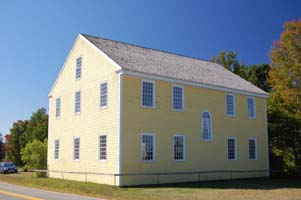
In 1796, Rev. Jonathan Ward was ordained as minister in Alna. Rev. Ward was a man of pronounced convictions, and his aversion to the bass viol, an instrument common in the early days of meetinghouse music, prevented its introduction in Alna's choir for many years. At length he was outvoted. On the Sunday of its introduction, Rev. Ward announced that they would sing the one hundred nineteenth psalm (the longest in the Bible), and "fiddle it to their heart's content."
In winter, churchgoers brought foot stoves filled with glowing coals for warmth.
Members were admitted to the Church only after a detailed examination of their faith.
In 1832, a temperance pledge to "abstain spirits as an article of drink" was added.
Unlike many of the other meetinghouses of this period, the Alna meetinghouse has only one door. This door leads into a vestibule that contains the stairway to the gallery, as in the Rocky Hill Meetinghouse in Amesbury, Massachusetts. The front (south) and back (north) walls are clapboarded, but the two ends are covered with shingles. The interior is in excellent repair, with painted spindle-top square pews, and a pulpit much like that at the Walpole meetinghouse in nearby Bristol, Maine, except for the stained centers of the panels. It has an ingeniously designed stool on which the minister stands, and which can be regulated to accommodate preachers of different heights. 
In what is perhaps the best example of dry Maine humor I have ever seen, the road leading to the nearby Alna cemetery is named "That's It Lane." The Alna Meetinghouse is available for wedding ceremonies, other services, and lectures. The building accommodates 200+ in square box pews, with facing seats. There are no bathroom facilities on the property. Parking is on lawn acres in front of and behind the building.
|

|
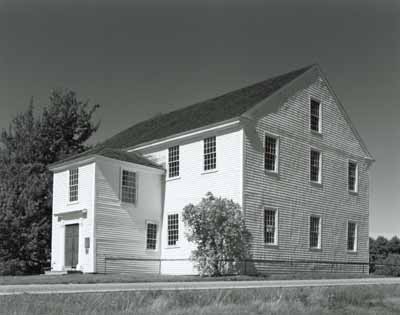
|

|
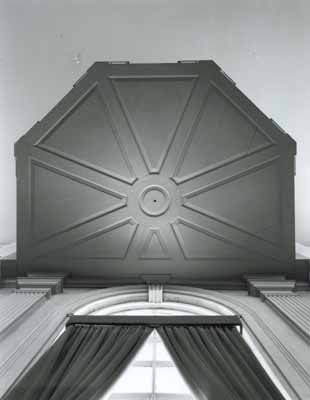
|
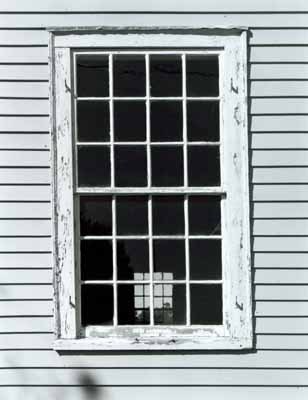
|
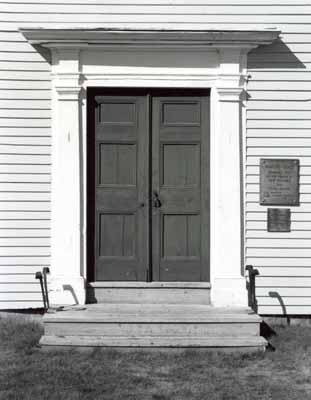
|
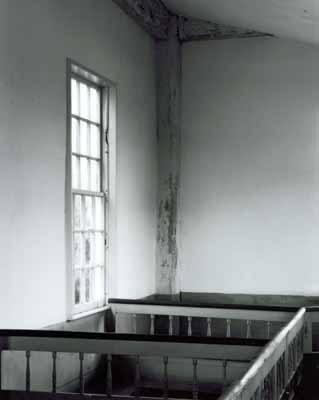
|
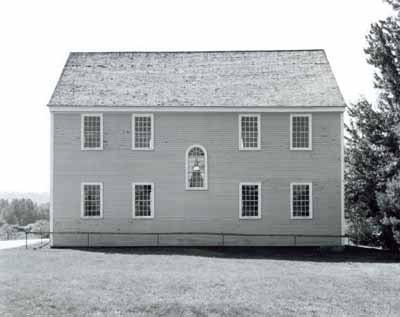
|
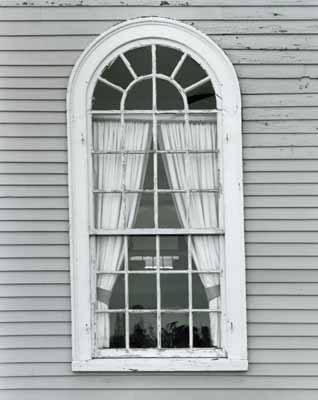
|
 The 40 by 52 foot building is one of the finest examples of a traditional New England meetinghouse in the state of Maine.
Be sure to notice the square box pews (owned by individual families), raised pulpit, original wide pine floor boards, and huge hand-hewn pillars and beams.
The Church was remodeled in 1822, with the addition of gallery pews, an entrance hall, and grain-painted woodwork.
The 40 by 52 foot building is one of the finest examples of a traditional New England meetinghouse in the state of Maine.
Be sure to notice the square box pews (owned by individual families), raised pulpit, original wide pine floor boards, and huge hand-hewn pillars and beams.
The Church was remodeled in 1822, with the addition of gallery pews, an entrance hall, and grain-painted woodwork.
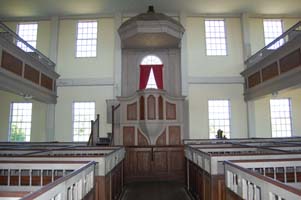 Church records contain Deacon's discussions of member attendance and conduct, sometimes resulting in suspension or excommunication.
Regular church services were held here until 1876.
In recent years the building has been used for Town Meetings.
Church records contain Deacon's discussions of member attendance and conduct, sometimes resulting in suspension or excommunication.
Regular church services were held here until 1876.
In recent years the building has been used for Town Meetings.